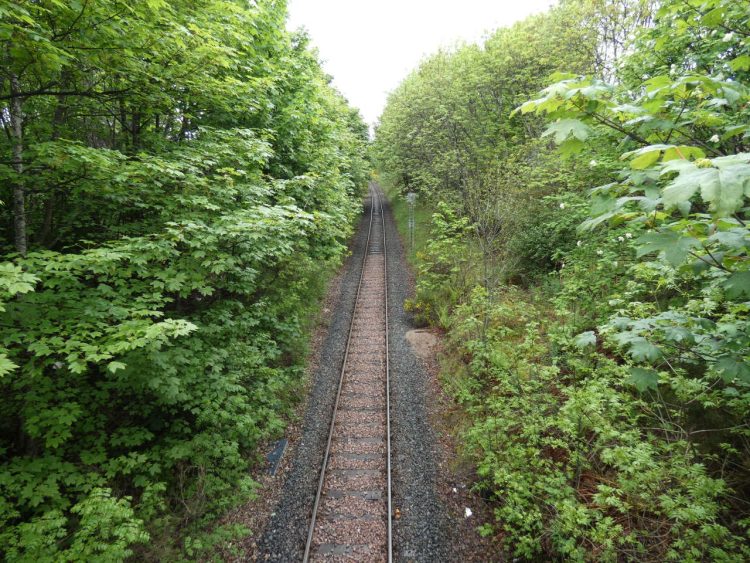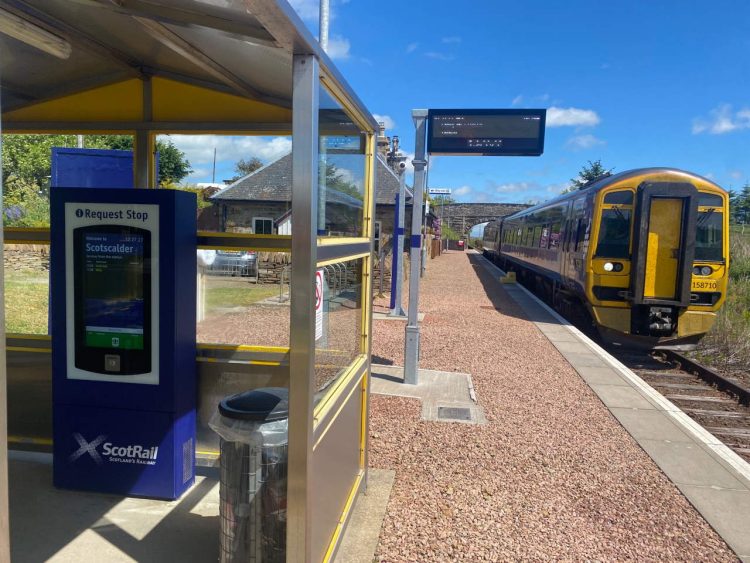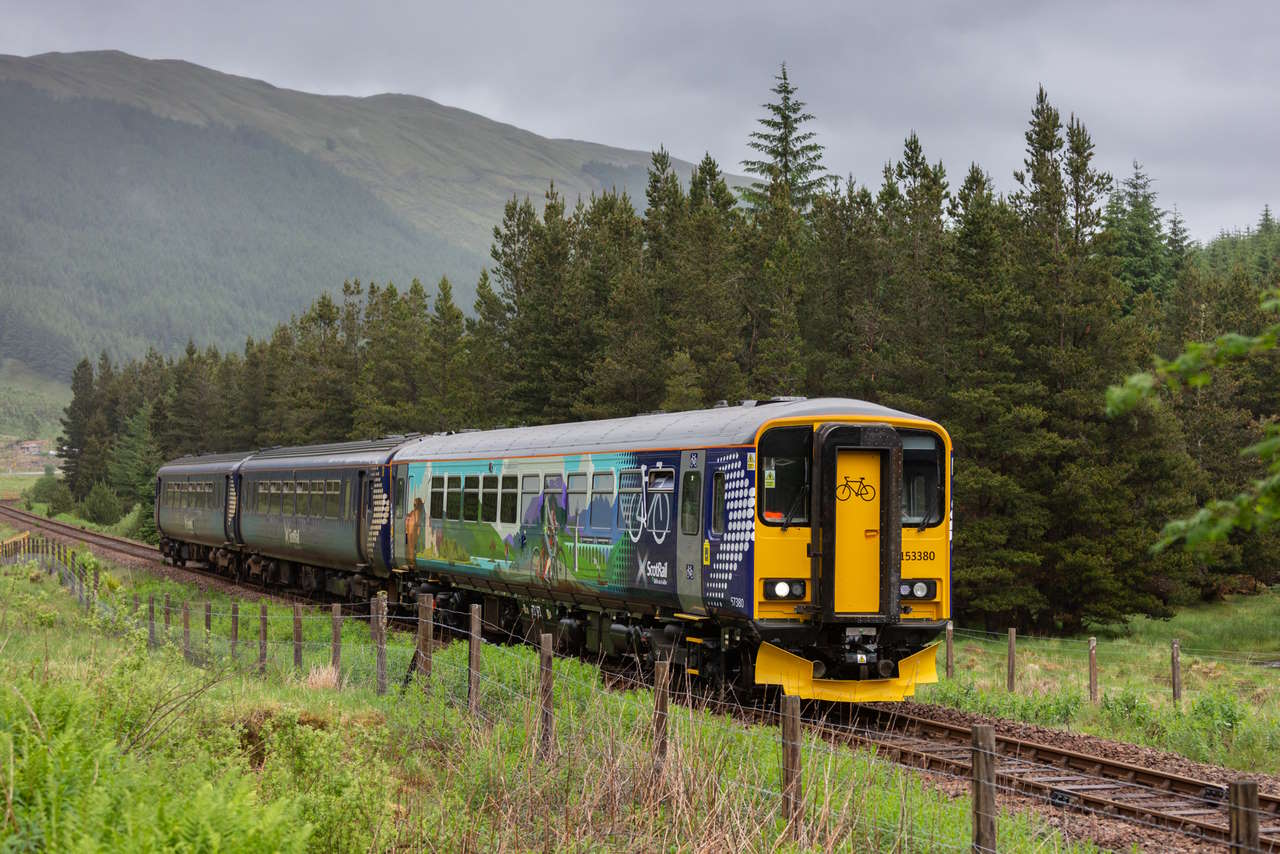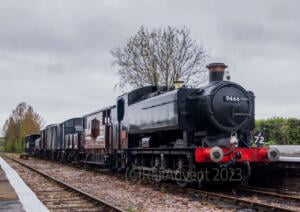ScotRail has announced that from Sunday 12 November, services on the Far North Line will temporarily not call at Altnabreac station in Caithness.
The train operator has decided to withdraw services because the private owner of the five-mile road which provides the only access to the single-platform station and a neighbouring level crossing has not given permission for ScotRail or Network Rail to use it.
As a result, workers are unable to carry out maintenance work which is necessary for the station, which is nearly 150 years old, to operate safely during the winter.

Fewer than 300 passengers boarded trains at the station. It is eleven miles (eighteen kilometres) from the nearest village, but walkers, off-road cyclists and railway enthusiasts use it to access the remote location. The withdrawal of the service at the station will further isolate a tiny community, so ScotRail intends to restore services as soon as possible.
Altnabreac is one of eight stations on the Far North Line, which operates on a ‘request to stop’ basis. At the other seven, ScotRail has installed new kiosks that enable passengers to request an approaching train to stop at the station by pushing of a button, which transmits a radio message to the driver’s cab. However, it was impossible to install this at Altnabreac due to the lack of access.

The Sutherland and Caithness Railway station originally opened the station on 28 July 1874, and it later became part of the Highland Railway.
David Simpson, ScotRail’s Service Delivery Director, said, “It is very disappointing that services will temporarily not call at Altnabreac because we can’t access the station safely to perform maintenance and other work during the winter period.
“We know how important services on the Far North Line are to local residents, tourism, and the wider community in areas like Altnabreac where public transport options are limited.
“Withdrawing services is very much a last resort and we would like to reassure the local community that we will be doing everything we can to secure safe access and resume services at Altnabreac as soon as possible.”
Cllr Raymond Bremner, Councillor for Wick and East Caithness and the Leader of Highland Council, said: “It is regrettable that services to Altnabreac are being withdrawn. I’ve used the station a number of times over the years and it is an important access for one of the most remote areas of Caithness and one that is of historical importance.
“I would hope that this matter can be resolved quickly and speedily so that the communities of this area of Caithness and visitors to the area will once again be able to have unrestricted access to it.”
Ian Budd, Convener of the Friends of the Far North Line, said: “We hope to see this extraordinary situation resolved as soon as possible. The Far North Line provides a wonderful opportunity to travel to beautiful and remote locations, as well as providing an essential service to this part of Scotland.”






Responses
The owners of the station house are clearly going for a ‘land grab’. Let’s hope NR act firmly and decisively to secure the access they need and get the station re-opened ASAP.
Ridiculous that we’re all being told to get off the roads and onto the train, and the railways can’t get some electrics and a box onto a train!
Seriously get a grip.
The Government should use its powers and compulsory purchase the road from the owner.
So very sad to learn of this dispute in the Scottish Highlands. Have travelled up to Thurso three times in the past just to admire the most desolate part of the beautiful countryside. Breaking down once on a bridge in the middle of a fierce snowstorm we loved this adventure. When the snow had stopped we saw herds of deer coming down to the train, no doubt looking for some scraps of food from the passengers. Will always remember this wonderful journey.
Disingenuous excuses given for this. Of course access is possible by rail but it would be expensive to provide a suitable maintenance train. So the honest answer would be the perfectly sensible one that access is disproportionately expensive. Not impossible.
Confiscate the land, this landowner needs removed, kicked out, there is no right to refuse access, time this landowner got severe harsh punishment and warn free access to all. Landowner is a disgrace. Time for action. Name and shame the pathetic landowner and start action against landowner.
We have not been told why l’lord didn’t grant permission – perhaps network rail is at fault ?
Somehow I think it’s probably a ‘storm in a teacup’ – will be resolved – without the need to burn the l’lord at ‘the stake’.
Erm….. Yes, well Bolshevism turned out to be such a good idea!
Quite agree with scott.b Typical NIMBY and feudal Laird or is it some multinational timber company
Clearly the fault lies with “the unions” and not with the landowner.
Roll on land reform. Name and shame!
Helicopter them in via winch (along with any essential equipment needed) or drop them off by rail after the last night service had run – leaving the maintenance train with them overnight and returning in the morning). The number of times I’ve seen individual long distance taxis ordered costing Megabucks to shuttle ticket holders here or there when the trains fail, they can afford it and then the landholder isn’t holding them to ransom.
With a bit of ingenuity I’m sure a maintenance crew and all their required equipment could be transported to the station by rail. In years gone by this would have been standard practice.
However, when you see Network Rail crews carrying out station maintenance these days they typically turn up in 2 or 3 vans, one of which is a “hospitality” or “personal needs” van – presumably for making cups of tea and providing a sheltered rest area. I guess the Unions now insist on this, so travelling to the site by train is ruled out.
I think you will find that access for maintenance is demanded and controlled (quite rightly) by HASWAS, not by trade union action and, at places like Altnanreac, decisions by Marples and Beeching reduced sidings and loops to zero so compelling people to use a private road. It’s only in Scotland that there is legally allowed access for individuals over such a road – no such rights for people in England or Wales.
It actually contains a toilet and access to drinking water which is illegal not to provide.
Usually they’d also contain kitchen amenities akin to that of a microwave and a sink because mostly rail workers work at night and most “conventional” lunch places are not available.
When you need the toilet at work, do you have one available? When you need a break from doing your work so you can continue to work safely, do you not have somewhere safe, warm and dry to go?
Enough with this ‘just doing cups of tea’ anti worker rhetoric. Should they just cr*p in the woods nearby? Wash their hands in a stream? Ask yourself why do you hate them so much.
Health and safety legislation requires that welfare facilities, i.e. toilets and messing, are provided – it is not ‘bolshy’ unions demanding it, and I’m sure you would not like to ‘rough it’ when working in a remote area!
Very true, couldn’t go without the teabreak for long
It’s required by law for heavens sake . Nothing to do with the Unions , we would be a lot worse off with what’s left of them !
Oh, well done that landowner. Honestly, for these people everything is never enough.
Yes, let’s go back to a feudal system of serfdom!!!
Engineering sites are serviced by freight companies transporting equipment to and from the sites. Pretty sure getting what’s needed to a station wouldn’t be a problem. Might cost a bob or two more but definitely doable.
Other rail engineering projects are served by freight companies moving equipment to and from the sites. Might cost an extra bob or two but would get the job done.
Name and shame the land owner then.
Dear sir
It reminds me of my time on the railway, a lot of the access points- roads were sold off, so holding the railway to blackmail, how stupid
C brown
The maintenance crews could maybe catch a train? Just asking.
Hi Ian, maintenance crews often need to close the line when working, as passing trains can cause unsafe working conditions. Also some materials are unsuitable to transport by rail due to length or other requirements. A concrete truck cannot run on rails yet for example
Sorry to disagree with your comments regarding concrete trucks can’t run on rails.
I worked for the railway for over thirty years and was part of work parties pouring concrete base’s. The concrete lorry was loaded on to a low level railway wagon and taken to site via a loco hauled train. Concrete poured and returned to the sidings for re filling or not.